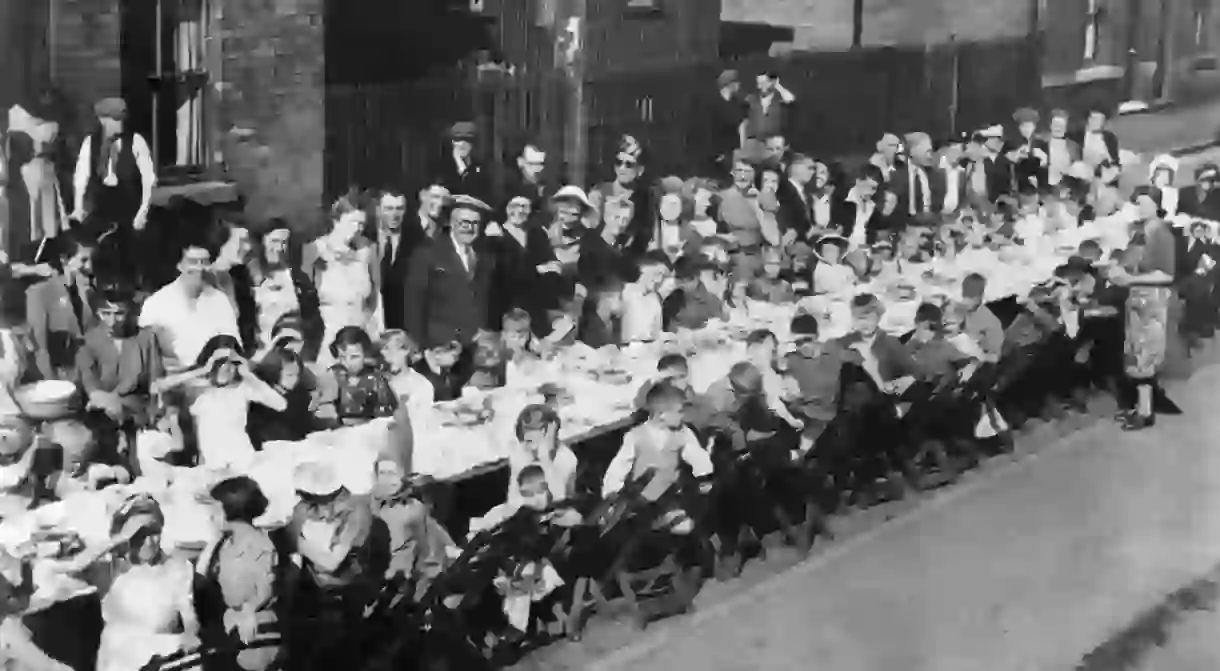All You Need to Know About VE Day on the 75th Anniversary

May 8, 1945 marked the end of six years of war and is remembered across the UK each year as Victory in Europe (VE) Day. This year commemorates 75 years since World War II ended. We look at some of the historical background and also how the British celebrate.
A week before Victory in Europe was announced – and Germany officially surrendered – Nazi Party leader Adolf Hitler shot himself and negotiations began between Karl Dönitz, the newly elected head of state, and the Allies. On 7 May, an unconditional surrender of all German forces was signed by Supreme Allied Commander, General Eisenhower. It came into force the next day. For the British, it meant years of bombing raids, food and clothing rations and blackouts were finally over.

The history of celebrating VE Day
Lost lives, demolished cities and homes, and immense suffering was all that the war had to show for itself. The pain among communities is only imaginable, as is the relief of it stopping. Brits first heard the news during a BBC announcement late on 7 May, while newspapers ran headlines such as “Germany quits” on 8 May. Front-page splashes on The Daily Sketch and the Daily Mirror announced a two-day-long national holiday: parades and street parties followed. More than 50,000 people took to the streets in Piccadilly Circus with flags. It was a day the country had long waited for.

Celebrating VE Day in 2020
It’s only the second time in history that the May Day bank holiday, traditionally held on the first Monday in May in the UK, has been moved. (The first was for the 50th anniversary of VE Day.) This year the May bank holiday has moved four days from Monday to Friday, so it falls on 8 May. In doing so, it allows for a three-day celebration. The original plans encouraged street parties and pub celebrations – but under lockdown the celebrations are taking place on Zoom, switching out “street” for “sofa”. Elsewhere, English Heritage suggests printing out and colouring in its Union Jack templates to stick in your windows.
The tradition of a state announcement
During a national radio broadcast at 3pm on VE Day, Prime Minister Winston Churchill officially declared the end of the war. He made clear the obstacles that lay ahead, but encouraged “a brief period of rejoicing”. A young Princess Elizabeth is said to have joined the revellers outside Buckingham Palace – albeit secretly among the crowds. To the UK and across the Commonwealth, her father King George VI announced victory at 9pm on the evening of May 8, 1945, via a radio address.
The Queen’s VE Day speech this year
In keeping with tradition, the Queen makes a televised address to the nation at 9pm, the same time her father did 75 years ago. This will follow a televised musical event, VE Day 75: The People’s Celebration. Alongside Queen Elizabeth II’s announcement, in a very Covid-19 manner, we will see a prerecorded video message from Prince Charles, who reads an extract from his grandfather King George VI’s diary about the events on the day and the royal family’s balcony appearances.














